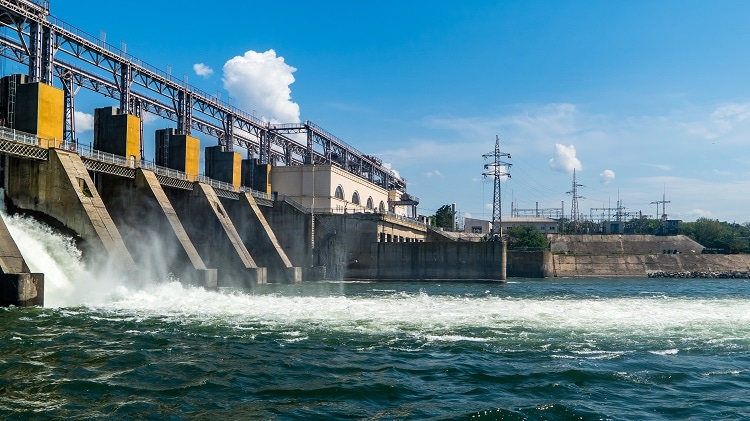Karla Jauregui Sandoval
AP Environmental Science ♻️
252 resourcesSee Units
Hydropower is energy that comes from a turbine that produces energy from the movement of bodies of water.
There are two ways to generate hydroelectric power: dams and tidal waves.
Image Courtesy of AZoM

How it works 🌊
Dams are built on rivers where the terrain will produce an artificial lake or reservoir.
As the water is released from the reservoir, it flows through a pipe and falls to a lower elevation, which generates kinetic energy. This kinetic energy is used to turn a turbine, which generates electricity. The electricity is then sent to a generator, where it is converted into an electrical current that can be used to power homes, businesses, and other buildings.
Benefits and Drawbacks
Benefits 👍🏻 | Drawbacks 👎🏻 |
|
|
Important Dams to Know
- Hoover Dam ➱ provides flood control, water and irrigation for industrial and domestic use as well as hydroelectric power
- Grand Coulee ➱ Largest hydropower producer in the USA
- Three Gorges Dam ➱ Controls flood and provides power. Causing landslides and erosion of reservoirs downstream
Watch: Environmental Science
Browse Study Guides By Unit
🏜Unit 1 – The Living World: Ecosystems
🐠Unit 2 – The Living World: Biodiversity
👪Unit 3 – Populations
🌏Unit 4 – Earth Systems & Resources
🏖Unit 5 – Land & Water Use
⚡️Unit 6 – Energy Resources & Consumption
💨Unit 7 – Atmospheric Pollution
♻️Unit 8 – Aquatic & Terrestrial Pollution
🔥Unit 9 – Global Change
📚Study Tools
🤔Exam Skills

Fiveable
Resources
© 2025 Fiveable Inc. All rights reserved.